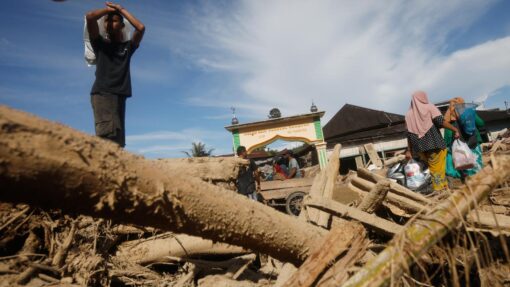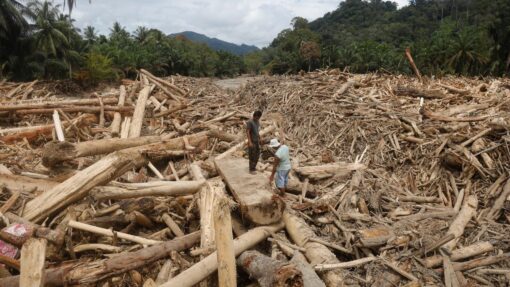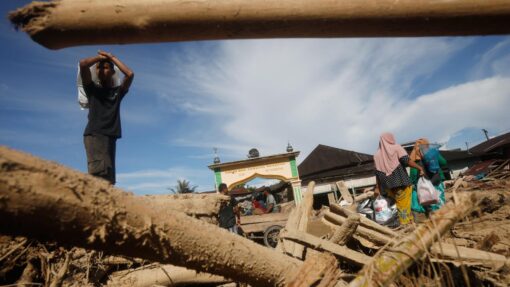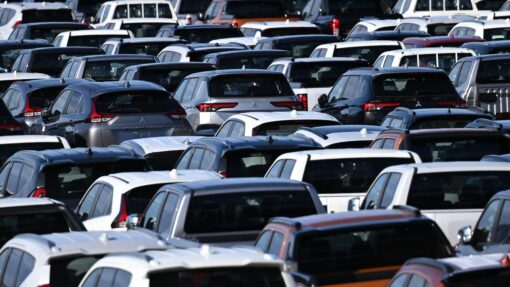Hurricane Ian heads for Carolinas
Meg Kinnard and Adriana Gomez Licon |
A revived Hurricane Ian has set its sights on South Carolina’s coast and the historic city of Charleston, with forecasters predicting a storm surge and floods after the megastorm caused catastrophic damage in Florida.
With all of South Carolina’s coast under a hurricane warning, a steady stream of vehicles left Charleston on Thursday following officials’ warnings to seek higher ground.
Storefronts were sandbagged to ward off high water levels in an area prone to inundation.
With winds holding at 140km/h the National Hurricane Centre’s update at 5am on Friday placed Ian about 235km southeast of Charleston and forecast a “life-threatening storm surge” and hurricane conditions along the Carolina coastal area later on Friday.
The hurricane warning stretched from the Savannah River to Cape Fear, with flooding likely across the Carolinas and southwestern Virginia, the centre said. The forecast predicted a storm surge of up to 2.1 metres into coastal areas of the Carolinas, and rainfall of up to 20cm.
In Florida, rescue crews piloted boats and waded through riverine streets Thursday to save thousands of Floridians trapped amid flooded homes and buildings shattered by Hurricane Ian.
Florida Governor Ron DeSantis said at least 700 rescues, mostly by air, were conducted on Thursday involving the US Coast Guard, the National Guard and urban search-and-rescue teams.
Ian had come ashore Wednesday on Florida’s Gulf Coast as a monstrous Category 4 hurricane, one of the strongest storms ever to hit the US.
It flooded homes on both the state’s coasts, cut off the only road access to a barrier island, destroyed a historic waterfront pier and knocked out electricity to 2.6 million Florida homes and businesses. Some 2.1 million of those customers remained in the dark days afterward.
At least six people were confirmed dead in Florida, including two who died Thursday afternoon when their car hydroplaned and overturned in a water-filled ditch in north Florida’s Putnam County, while three other people were reported killed in Cuba after the hurricane struck there on Tuesday.
In the Fort Myers area, the hurricane ripped homes from their slabs and deposited them among shredded wreckage. Businesses near the beach were completely razed, leaving twisted debris. Broken docks floated at odd angles beside damaged boats. Fires smouldered on lots where houses once stood.
“I don’t know how anyone could have survived in there,” William Goodison said amid the wreckage of a mobile home park in Fort Myers Beach where he’d lived for 11 years. Goodison said he was alive only because he rode out the storm at his son’s house inland.
The road into Fort Myers was littered with broken trees, boat trailers and other debris. Cars were left abandoned in the road, having stalled when the storm surge flooded their engines.
Lee County Sheriff Carmine Marceno said his office was scrambling to respond to thousands of 911 calls in the Fort Myers area, but many roads and bridges were impassable.
Emergency crews sawed through toppled trees to reach stranded people. Many in the hardest-hit areas were unable to call for help because of electrical and mobile phone outages.
A chunk of the Sanibel Causeway fell into the sea, cutting off access to the barrier island where 6300 people live.
Hours after weakening to a tropical storm while crossing the Florida peninsula, Ian regained hurricane strength Thursday evening over the Atlantic. The National Hurricane Centre predicted it would hit South Carolina as a Category 1 hurricane on Friday.
National Guard troops were being positioned in South Carolina to help with the aftermath, including any water rescues. And in Washington, President Joe Biden approved an emergency declaration for the state, a needed step to speed federal assist for recovery once Ian passes.
AP


